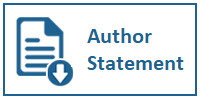ANALISIS FAKTOR-FAKTOR YANG MEMPENGARUHI PURCHASE INTENTION PRODUK HIJAB ORGANIK: PENERAPAN THEORY OF PLANNED BEHAVIOR, PCE DAN ENVIRONMENTAL KNOWLEDGE
DOI:
https://doi.org/10.31937/manajemen.v14i2.2053Abstract
Abstract- The growth in the number of Muslims in Indonesia is one of the main triggers that drive the growth of Indonesia's Muslim fashion industry. This Muslim fashion business opportunity makes business people compete to innovate their products. Zayana Organic offers a new opportunity for organic hijab made by sustainable production methods to replace conventional and polyester hijab for environmental protection and sustainable business development. Although the organic hijab is an interesting innovation, it turns out that Zayana itself has challenges in getting new customers. This is presumably because there are still many people who doubt the benefits of organic hijab products. In addition, the attention of Indonesian people's awareness of the environment and health is still relatively low, the price of environmentally friendly products which is quite expensive has made business people who produce organic products such as Zayana Organic have the challenge to maintain and develop their business. This study aimed to provide insights on factors influencing purchase intention to organic hijab. An online survey was conducted and multiple regression analysis was used to test the relationships among the variables. 160 eligible survey responses were gathered for data analysis and hypothesis testing using SPSS version 23 software. The results indicate that attitude, subjective norms, perceived consumer effectiveness, and environmental knowledge positively influence purchase intention to Zayana Organic hijab. Meanwhile, the effect of perceived behavioral control is insignificant.
Keywords: Attitude; Subjective Norms; Perceived Behavioral Control; Perceived Consumer Effectiveness; Environmental Knowledge; Purchase Intention; Sustainable Fashion; Organic Hijab
Downloads
Downloads
Published
How to Cite
Issue
Section
License
Authors retain copyright and grant the journal right of first publication with the work simultaneously licensed under a Creative Commons Attribution-ShareAlike International License (CC-BY-SA 4.0) that allows others to share the work with an acknowledgement of the work's authorship and initial publication in this journal.
Authors are able to enter into separate, additional contractual arrangements for the non-exclusive distribution of the journal's published version of the work (e.g., post it to an institutional repository or publish it in a book), with an acknowledgement of its initial publication in this journal.















